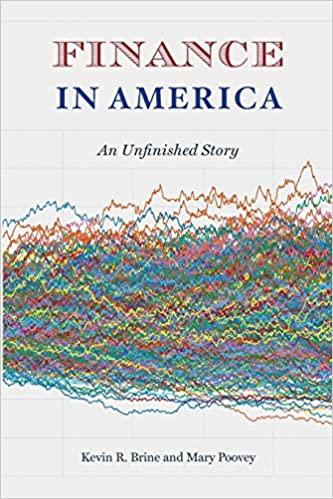Niendorf Corporation's 5-year bonds yield 9.50%, and 5-year T-bonds yield 4.80%. The real risk-free rate is r* = 2.75%, the inflation premium for 5-year bonds
Niendorf Corporation's 5-year bonds yield 9.50%, and 5-year T-bonds yield 4.80%. The real risk-free rate is r* = 2.75%, the inflation premium for 5-year bonds is IP = 1.65%, the default risk premium for Niendorf's bonds is DRP = 1.20% versus zero for T-bonds, and the maturity risk premium for all bonds is found with the formula MRP = (t 1) 0.1%, where t = number of years to maturity. What is the liquidity premium (LP) on Niendorf's bonds?
Answer
2.63%
3.54%
3.05%
3.50%
4.10%
2 points
Question 36
Your aunt has $760,000 invested at 5.5%, and she now wants to retire. She wants to withdraw $45,000 at the beginning of each year, beginning immediately. She also wants to have $50,000 left to give you when she ceases to withdraw funds from the account. For how many years can she make the $45,000 withdrawals and still have $50,000 left in the end?
Answer
41.13
39.50
40.72
39.10
45.61
2 points
Question 37
Suppose the real risk-free rate is 3.00%, the average expected future inflation rate is 4.10%, and a maturity risk premium of 0.10% per year to maturity applies, i.e., MRP = 0.10%(t), where t is the years to maturity. What rate of return would you expect on a 1-year Treasury security, assuming the pure expectations theory is NOT valid? Include the cross-product term, i.e., if averaging is required, use the geometric average.
Answer
7.98%
5.93%
7.32%
5.64%
7.10%
2 points
Question 38
Your girlfriend just won the Florida lottery. She has the choice of $16,600,000 today or a 20-year annuity of $1,050,000, with the first payment coming one year from today. What rate of return is built into the annuity?
Answer
2.75%
2.73%
2.52%
2.35%
2.54%
2 points
Question 39
Assume that the rate on a 1-year bond is now 6%, but all investors expect 1-year rates to be 7% one year from now and then to rise to 8% two years from now. Assume also that the pure expectations theory holds, hence the maturity risk premium equals zero. Which of the following statements is CORRECT?
Answer
The yield curve should be downward sloping, with the rate on a 1-year bond at 6%.
The interest rate today on a 2-year bond should be approximately 6%.
The interest rate today on a 2-year bond should be approximately 7%.
The interest rate today on a 3-year bond should be approximately 7%.
The interest rate today on a 3-year bond should be approximately 8%.
2 points
Question 40
You are considering 2 bonds that will be issued tomorrow. Both are rated triple B (BBB, the lowest investment-grade rating), both mature in 20 years, both have a 10% coupon, neither can be called except for sinking fund purposes, and both are offered to you at their $1,000 par values. However, Bond SF has a sinking fund while Bond NSF does not. Under the sinking fund, the company must call and pay off 5% of the bonds at par each year. The yield curve at the time is upward sloping. The bond's prices, being equal, are probably not in equilibrium, as Bond SF, which has the sinking fund, would generally be expected to have a higher yield than Bond NSF.
Answer True False
2 points
Question 41
The "yield curve" shows the relationship between bonds' maturities and their yields.
Answer True False
2 points
Question 42
Suppose Community Bank offers to lend you $10,000 for one year at a nominal annual rate of 9.00%, but you must make interest payments at the end of each quarter and then pay off the $10,000 principal amount at the end of the year. What is the effective annual rate on the loan?
Answer
11.45%
7.26%
9.40%
9.31%
10.70%
Step by Step Solution
There are 3 Steps involved in it
Step: 1

See step-by-step solutions with expert insights and AI powered tools for academic success
Step: 2

Step: 3

Ace Your Homework with AI
Get the answers you need in no time with our AI-driven, step-by-step assistance
Get Started


